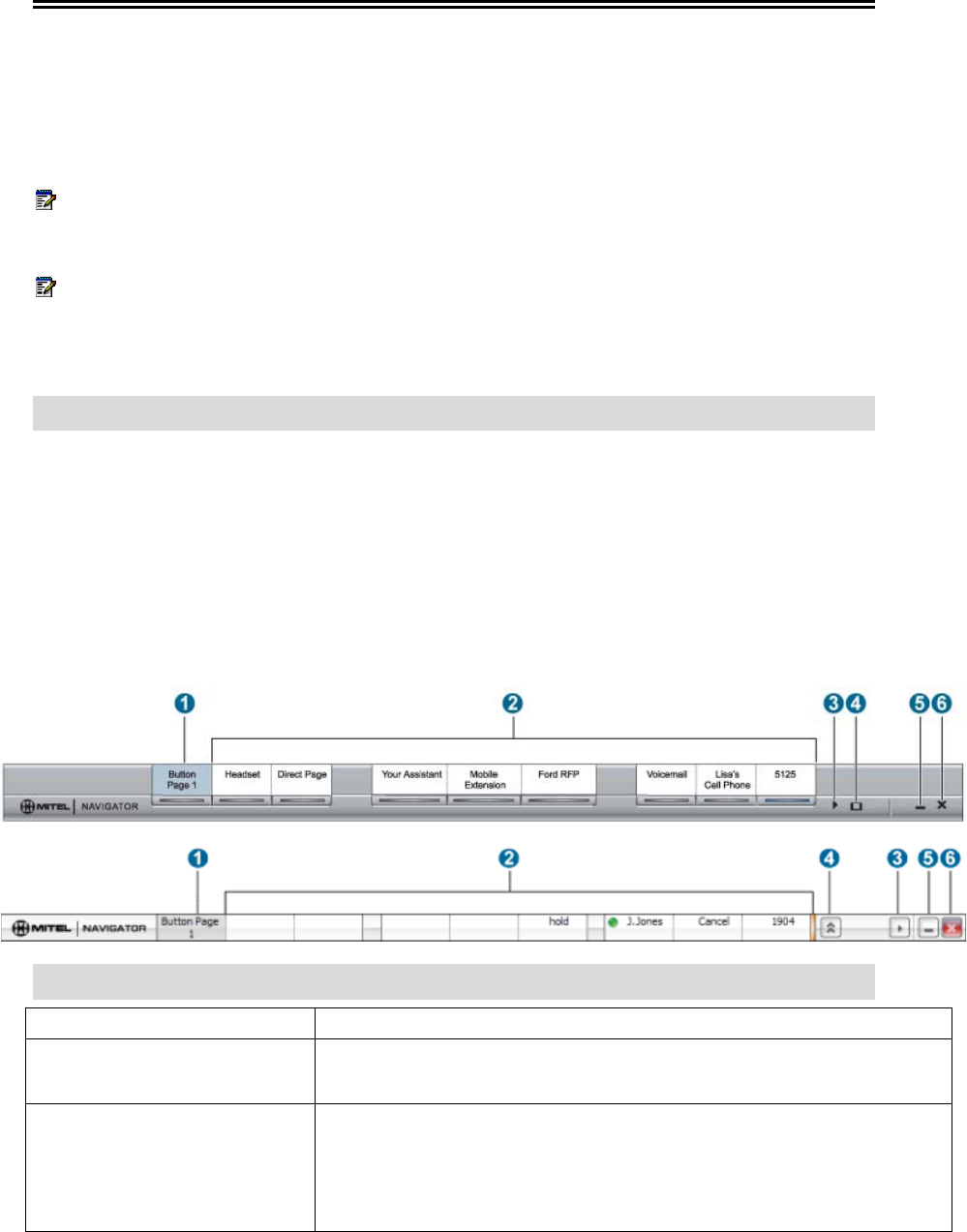
About the Navigator Task Bar
Use the Navigator Task Bar to make calls and invoke features. You can program Task Bar
Personal Keys to Speed Dial your contacts, launch PC applications, open PC documents like
a Microsoft® Word document, or navigate to a URL directly using your browser.
Note: To install and connect to the Navigator Task Bar application, refer to the Navigator
Installation Guide shipped with the phone. Your installer or administrator may have
completed all installation procedures for you.
Note: It is recommended that it you install the Integrated Office Navigator version of the NTB,
you first uninstall the Standalone NTB (if previously installed)
Connect to the Navigator Task Bar
Your installer or administrator usually completes the association between the Navigator Task
Bar application and the Navigator phone upon installation of the Task Bar. If your Task Bar
application is not connecting to your phone (for example, if your programmed Personal Keys
are disabled or you receive an error message upon start-up), contact your administrator.
Figure 2: Navigator Task Bar
Standalone NTB (top)
Integrated Office Navigator NTB (bottom)
Elements of Your Navigator Task Bar
Element Function
Button Page Number Key
Scrolls between Button Page 1, 2, and 3. The left-most Personal Key is
always the Button Page # key. Press this key to navigate to the next page of
Personal Keys.
Programmable Personal Keys
Provides 24 keys (8 physical phone keys that correspond to 3 pages of eight
programmable keys each on the Task Bar).
Task Bar Personal Keys correspond to the physical Personal Keys on your
phone. Each key has a status indicator and a programmable label. In this
guide, “Speed Dial key”, “feature key”, and “line key” refer to either the
physical Personal Key on your phone OR the corresponding key on the Task
10
